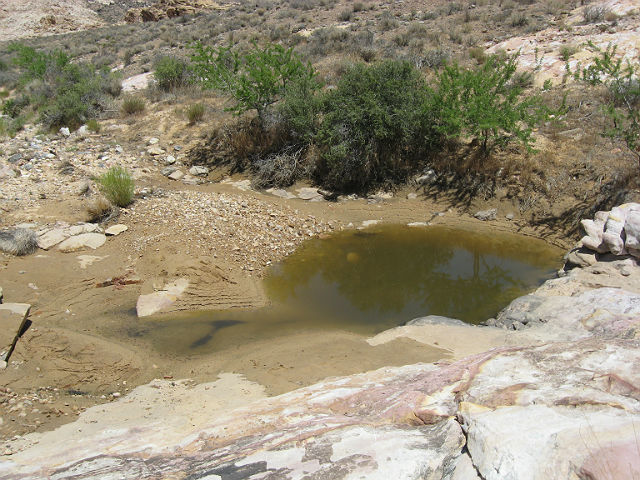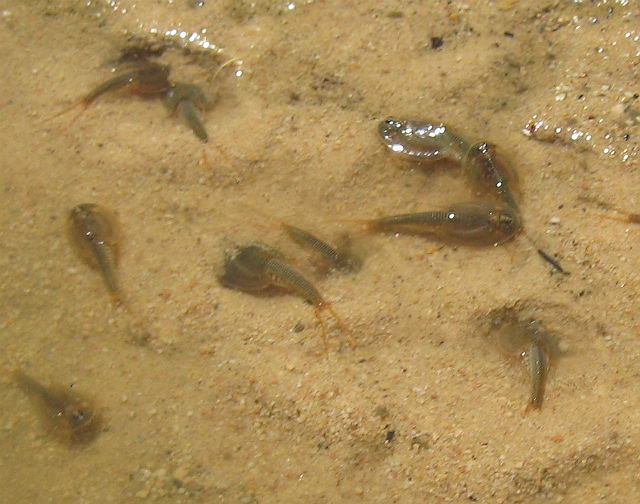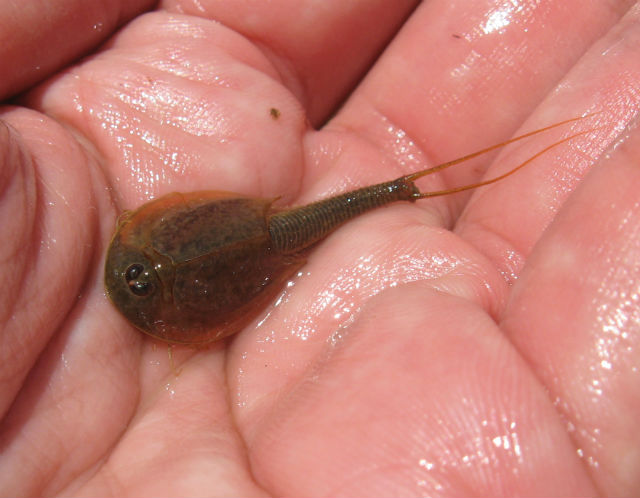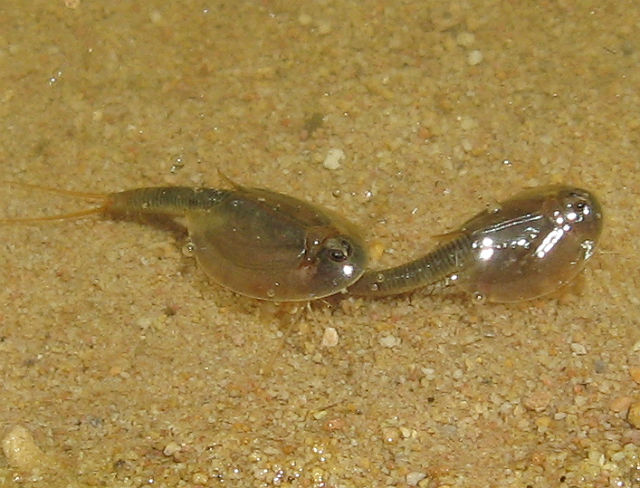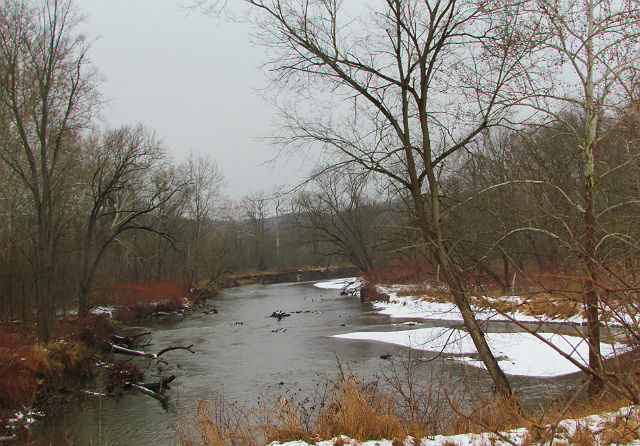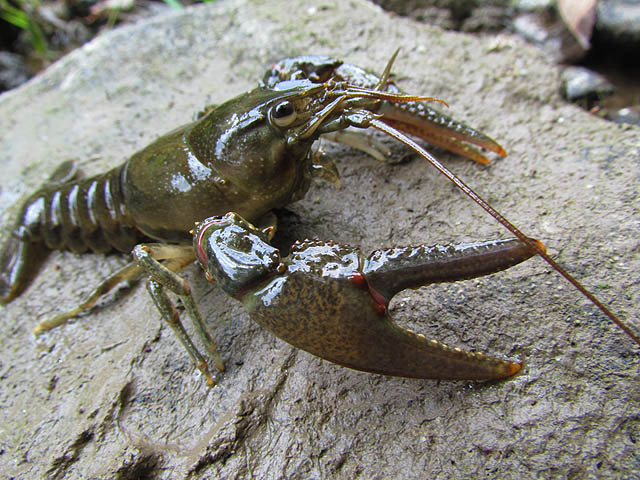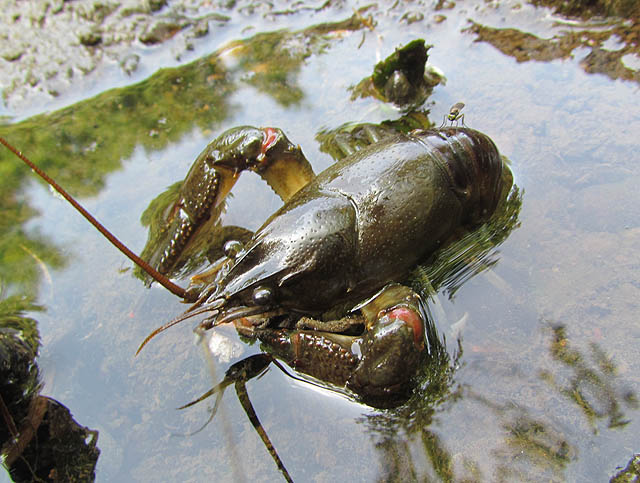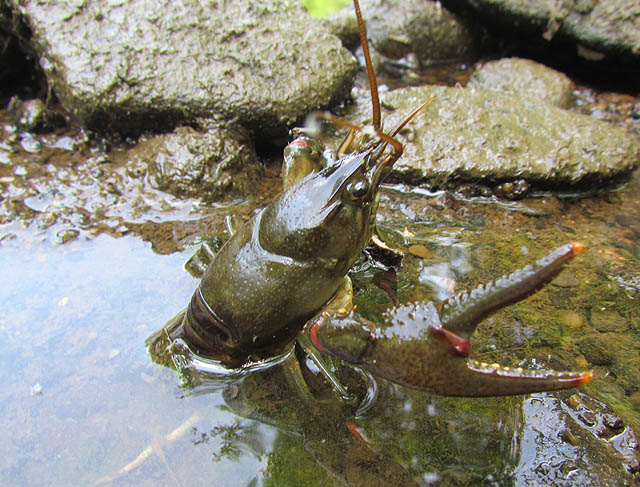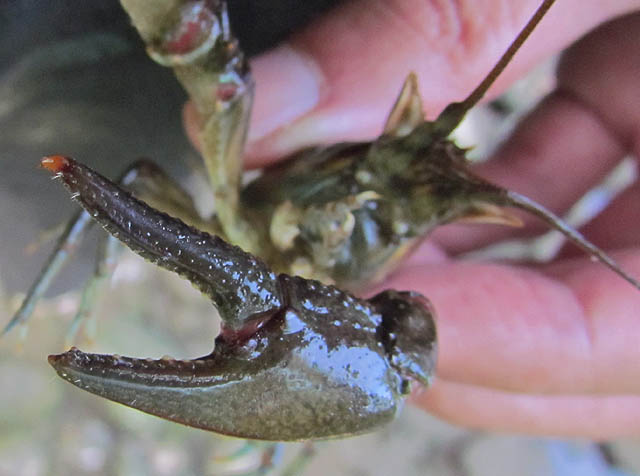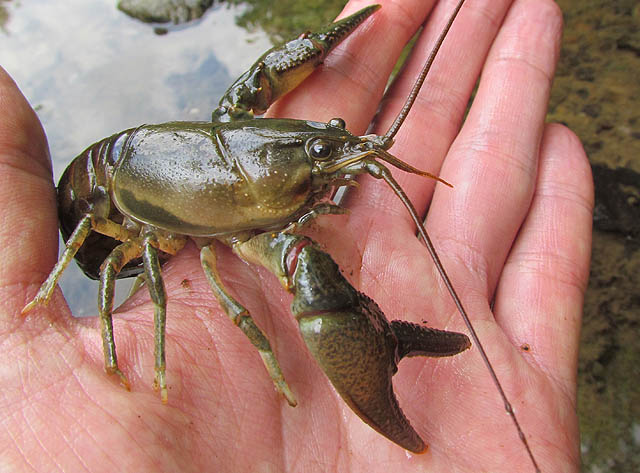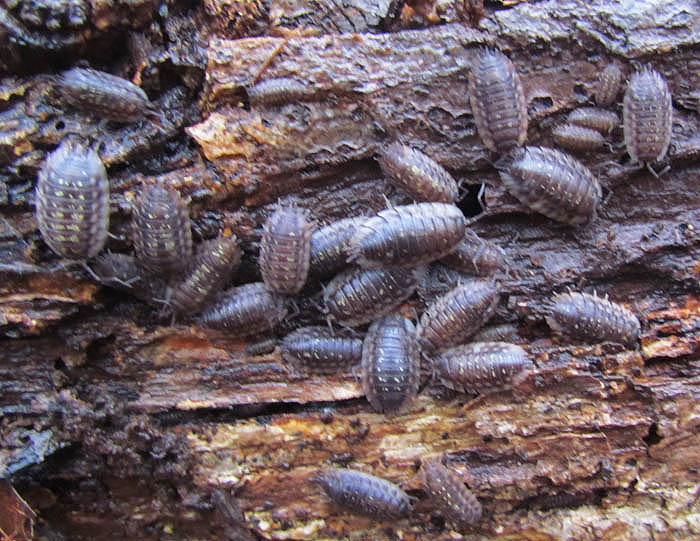While hiking in Valley of Fire State Park one morning, I decided to investigate several pools on the desert floor, some no bigger than large puddles.
In the water there were tiny, interesting crustaceans. Tadpole Shrimp are considered “living fossils,” since they have not changed significantly in outward form since the Triassic.
Their broad protective shell at the front end, and a long, slender abdomen gives them a similar overall shape to a tadpole, from which their common name derives.
To complete their lives, these creatures depend on the changing nature of the temporary pools of water that they inhabit. During the dry season (Summer and Fall), their offspring stay inside the eggs and the pools are devoid of water.
As pools fills with rainwater during the Winter and Spring, the eggs hatch and feed on tiny invertebrates as well as algae and other organic debris.
Not only was it cool to encounter this “mini horseshoe crab,” but Tadpole Shrimp is also considered a human ally against the West Nile virus, since they eat mosquito larvae.


